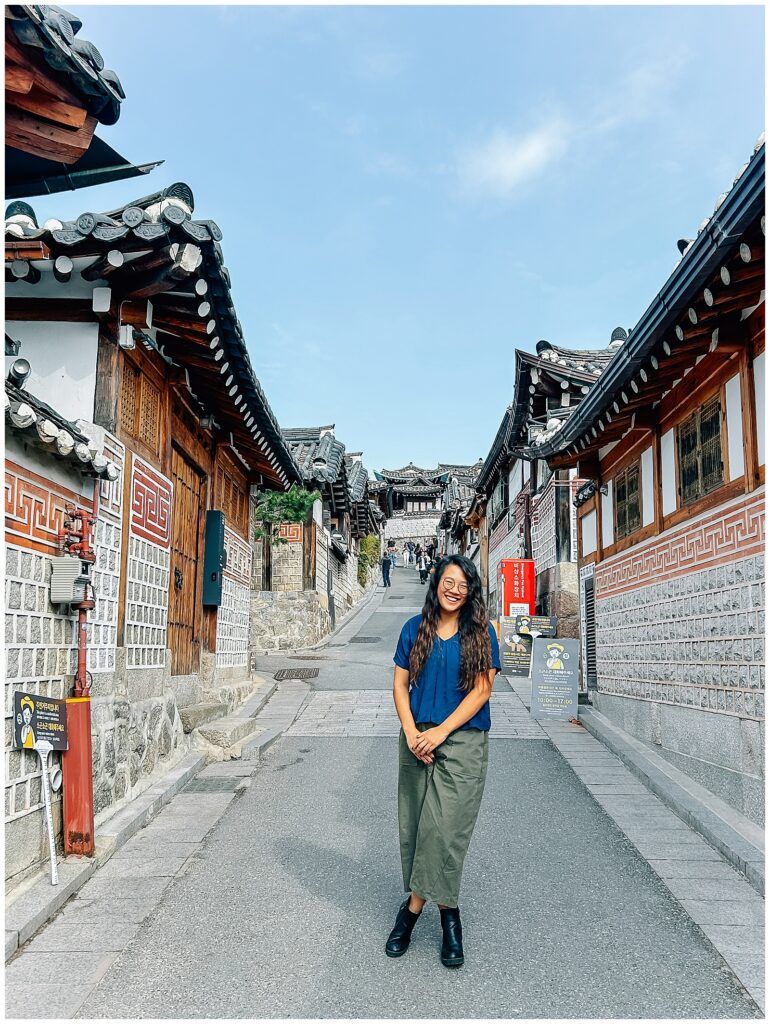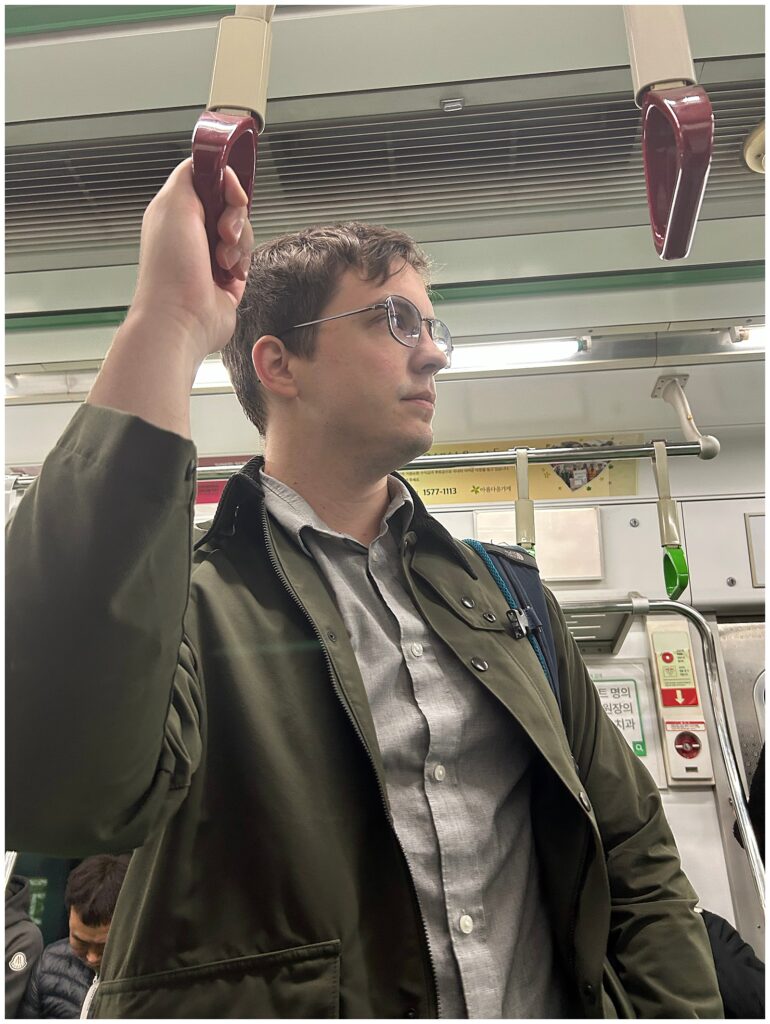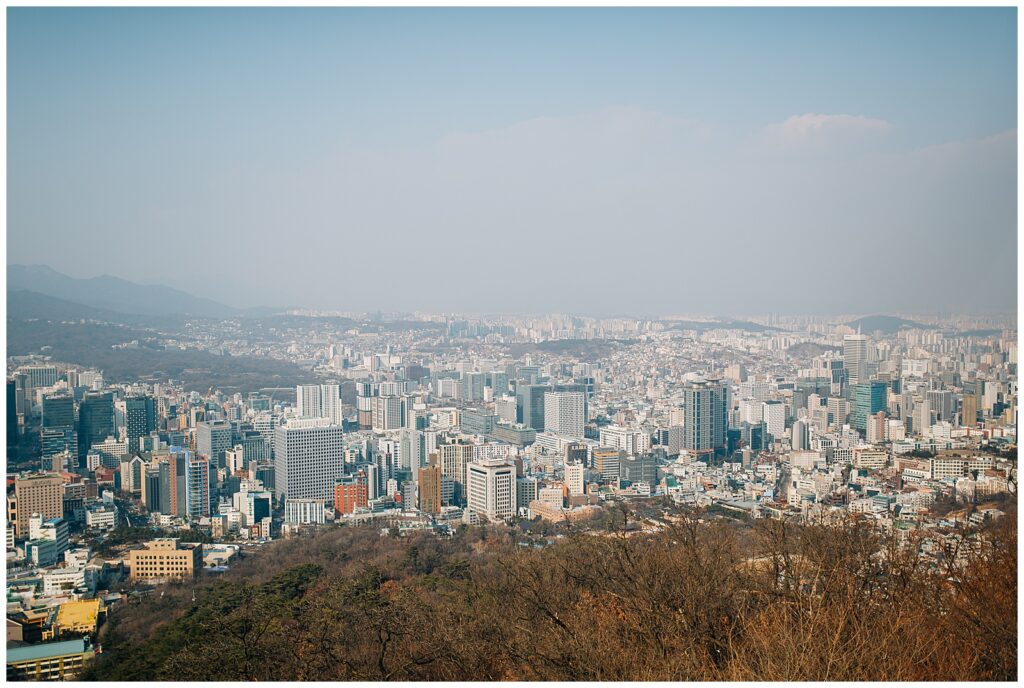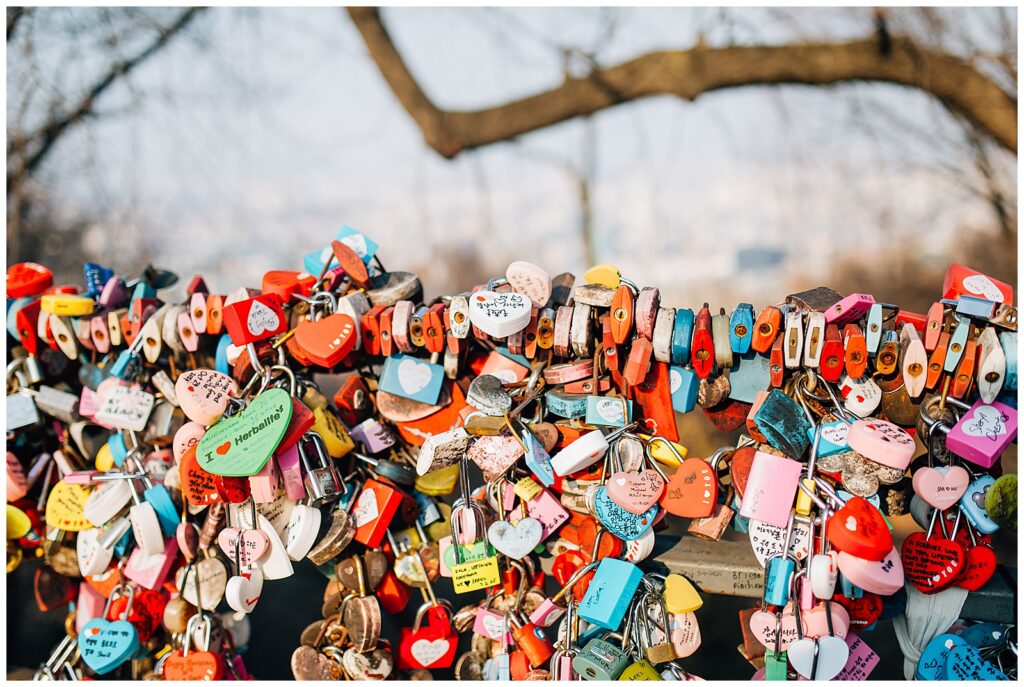Travel Guide for Seoul, South Korea

I am by no means a travel blogger. Most of these photos aren’t even with my professional camera because it’s heavy to carry and I’m lazy 😅 However, when researching what to do in Seoul, various internet sources kept producing the same touristy items. Fortunately, I have friends who are Korean-Koreans and friends who go there almost annually, so I was able to get their recommendations, too. And, of course, I pulled from previous experiences of my own. I’m writing this to hopefully be a resource for someone visiting Korea who doesn’t know what to do in the country.
After graduating high school, I spent 5 weeks in Seoul doing a Korean language program. That time in Korea was my first real experience away from home/parents. That was almost nine years ago and my entire personality has gone through roughly 5 transformations since then. So a Korea trip was due!
I’m generally not a city person, but Seoul is my favorite. You get a new, ultra-modern city and also Korean traditions. It’s safe – you can explore freely without worrying about violence or theft. It’s clean – there’s no litter or graffiti. There’s healthy social cohesion – for example, subway seats for the elderly/pregnant people are not used except by those demographics. The food is delicious. Things are generally less expensive than their American equivalents. And I’m obviously biased, but the people are good-looking 😉
I speak just enough Korean to barely communicate (I took 2 years worth during college, never used it, and lost pretty much all of it 🙃) and give Igor a lot of laughs.

Getting to Seoul:
To get to Seoul, you fly into Incheon Airport. In the past, I’ve taken the “Arex” train to get from the airport to Seoul, but this time we took a bus and that was the right call for us. The bus was about $12/person, comfortable, and took us directly to the nearest subway station to our hotel. If we’d taken the train, we would’ve had to deal with pulling luggage during transfers and getting a subway card – things that we weren’t in the mood to do after a long travel day.
Where We Stayed:
We stayed at Hotel Skypark Central Myeongdong. During our trip, I was able to meet up with a childhood friend who has lived in South Korea for almost 20 years now and she made fun of me for staying in Myeongdong, a “tourist” spot. But we are tourists and thoroughly enjoyed our stay there. Myeongdong is a cute area for shopping and restaurants. The hotel was a great price, close to a subway station (Euljiro-1 on the green line, a very convenient subway line to have easy access to), and it was close to a lot of things we explored.
Myeongdong is packed with people in the evenings/night, so we ate breakfast here every morning and then adventured elsewhere for the rest of the day.
How To Get Around Seoul:
The public transportation system in Korea is the best of the best. It’s clean, safe, and trains come every few minutes. On our first day, we went underground & bought transportation cards at a convenience store for $15/person (you have to pay in cash though so get that first) that covered all subway and buses for the week. It was really nice to not have to refill the card with money regularly.
Google maps wasn’t very good in Korea. Naver Maps is worth downloading.

Experiences You Don’t Get In the USA:
1. Norangjin Fish Market: The oldest and largest seafood market in South Korea. The building resembles a warehouse and deals 250 to 300 tons of seafood every day. All the food sold here is alive when you arrive – the vendor booths have fishtanks where they grab, weigh, and kill the seafood in front of you. After buying the food, you go upstairs to the restaurant to sit down and a shop representative will ask you how you want your food prepared (steamed, grilled, raw, etc).
A unique food to try is “Live Octopus” (산낙지) – octopus that is served so fresh the tentacles still move on the plate. Chew thoroughly to avoid a choking hazard and prepare yourself for suctioning inside your mouth (so I’ve heard. I couldn’t even touch it, let alone eat it).
2. Korean Bathhouse (찜질방): These public bathhouses are usually open 24/7. When you check in, you typically receive pajamas and a locker key for your shoes and clothes. The first part is a gender-segregated bathing area and people are fully nude. There are hot tubs, showers, and traditional Korean kiln saunas. You can pay to get a full-body exfoliating scrub – where the workers use a sandpaper-like mitt to vigorously scrub your layers of dead skin. Yes, you’re still fully naked for this, so they scrub you everywhere. Beyond the bathing areas, you put on the pajamas to hang out at the co-ed communal area with restaurants, heated floors, exercise rooms, ice rooms, and potentially sleeping quarters.
3. Karaoke (노래방): When googling what to do in Korea, I was surprised about how infrequently karaoke rooms came up because they are so thoroughly enjoyed by the locals. You’ll find karaoke rooms in every area of the city. This is not public karaoke in front of an audience of strangers. You get a private room with a couch, tv, microphones, and a book with song options (English-speakers have plenty of choices). You have fun with the company that you arrived with.
4. Buying Glasses: Obviously, you can buy glasses in the USA, but I hate dealing with insurance and avoid getting eye exams until I have to. While in Korea, I skipped prescription-related regulations by buying glasses in Myeongdong’s underground shopping district. My husband got a free eye exam on the spot & we both bought new glasses. A very simple process + I feel like Korean glasses slip down my face less frequently than glasses purchased in America (almost like they’re designed for noses like mine).
Things We Enjoyed that Do Not Generate on Most Google Searches “What to do in Seoul”:
- Haebangchon (해방촌): When I told an old Korean friend that I was coming to Seoul, she took us to this neighborhood for dinner and coffee. She said that it was nicknamed “Freedom Village” because many people settled here after liberation from Japanese occupation (1910-1945). Today, it is a trendy hot spot with restaurants, cafes, and cute street art.
- City Hall Library: The previous Seoul City Hall building has been converted to a library & a new, larger building now exists behind it for current city hall functions. The former is a lovely place to get some work done. And the building included some exhibits going over the history of the building and Korea.
- Lotte Tower: This is the tallest building in Korea – a 123 story, 1832 ft tall skyscraper. We went to Bar 81, a bar on the 81st floor which was swanky, kinda pricey, and had wonderful views that photos could not do justice.
- Massages: We discovered that massages are fairly inexpensive (around $50/hour) and don’t require reservations. I feel like massages usually feel calm and match the slow tempo of the relaxing background music, but the massage practitioners in Korea almost feel like they’re in a rush, which I prefer.
- War Memorial Museum: This museum is free and had wonderful immersive experiences for visitors. Of course, there was a large section dedicated to the Korean War. The museum also gave a good overview of ancient Korean history as well. And it had a large collection of planes/tanks/machinery from various wars.
- Bike the Han River: The Han river divides Seoul in half so biking along the paved bike pathway was a scenic and enjoyable way to explore the city. In warmer months, apparently there is a night light show at Banpo bridge and I was told that getting shin ramen (convenience stores have microwaves so you can buy the ramen there and prepare it immediately) and enjoying that view is a must.

Things that Will Generate on a Google Search “What to do in Seoul” That Are Still Worth Mentioning Because They Were Great:
1. Palaces: There are multiple palaces of the Joseon Dynasty (1392-1910) in Seoul, each with unique history and architectural styles. Admission is free if you wear a hanbok (traditional Korean clothing that can be rented nearby) or around 75 cents (at this point, I don’t know why they even charge…). The architecture and grounds are truly beautiful. And at certain times, there are traditional performances, like guard changing ceremonies.
2. Hike to Namsan tower & cable car down: This communication tower/tourist trap is on a hill and is the highest point in Seoul. There are panoramic views of Seoul which really allow you to see what a mega city it is in all directions. And I since I’d gotten married since the last time I was in Korea, I contributed to the locks of love, attaching a padlock to the fences.
To get to the tower, we hiked roughly a mile via stairs through Namsan park. We stopped at free museums along the way. And we passed by little outdoor gyms – Igor noted that he thought outdoor free weights would get stolen in an American city, but that’s not the case in Seoul. After enjoying the tower, since going down a hill isn’t as good of a workout, we took the Cable Car to get back.


3. Buchan Hanok Village (북촌한옥마을): This residential neighborhood has many restored traditional Korean houses, the hanok. Because of overtourism, visitors are now only allowed in between 10am – 5pm.
My grandmother said she grew up in a hanok house. Since this trip, I’ve been fantastizing of having a guesthouse hanok some day when I am much richer 😛

4. Bukhansan National Park: Seoul is a mega-city, but it’s a mountainous country and has beautiful hikes nearby. The mountains look quite different than mountains in the Americas and Europe. Within Bukhansan National Park in Seoul, there is Bukhansanseong fortress (built 132 AD). I did a particular hike that took us to a part of the fortress’s defensive wall at the top of a mountain peak. We went in mid-March on a well-established hike and while there were old people enjoying the nature at the bottom, there were not any other hikers.

5. Cheonggyecheon Stream (청계천): This is an almost 7-mile stream and pedestrian walkway through downtown Seoul. It’s cute with bridges, fountains, and art installations. It passes through many districts, so if you can use this pathway to get to various places on your to-do list, opt to do that!

I sent this photo to my mom because it shows this river in 1976 (she came to the US in 1977) versus today. This is in downtown Seoul… Korea truly has modernized in such a short time.

6. Gwangjang Market (광장시장): A short walk from the Cheonggyecheon Stream you will find a maze of undercover alleyways lined with street food vendors on both sides and down the middle. It’s a pretty big wide building, but the amount of food and people crammed in here makes it feel tight.

7. Hongdae: This is a place for young people. There are trendy shops, unique restaurants, bars and clubs. It is very common (Hongdae even has seating and platforms for this purpose) to see street performers do kpop dances here.
8. Itaewon: This is another area with great nightlife. Koreans go pretty hard and stay out late. A lot of places had American music, but I particularly enjoyed dancing to clubs that only played kpop.
Food: I’m not going to list out Korean foods to try because it’d be too long of a list. But some things worth mentioning:
- Cafes: Coffee shops are everywhere in Seoul and Igor told me (I don’t drink caffeine much) that the coffee was really well done. My Korean friends told me that the Korean-Koreans usually only drink Iced Americanos
- Soju & Makeolli: Korean alcohol typically is soju, a distilled liquor often compared to vodka, and makgeolli, a cloudy, fermented rice wine. Soju is known for its neutral flavor (I only get the fruit-flavored versions tho) while makgeolli has a slightly sweet taste.
- Bingsoo: My dad is always excited to get this shaved-ice dessert whenever he’s in Korea, so it deserves a special recommendation.

Shopping:
- Malls: I don’t usually like shopping, but visiting the malls can be worthwhile because Korean style is different than American style. I feel like most Americans wear athleisure for everyday attire. In Korea, it’s business casual. I noticed that their attire is more modest, neutral-colored, and tend to be more “cutesy.” Keep in mind that Seoul is not particularly body-inclusive, and malls frequently only have a size equivalent to an American small or medium.
- Kids Clothes Market: For those with young families, you’ll find an entire building with booth after booth of adorable kids clothes at “Burdeng Children’s Clothing Shopping” in Namdaemun market. I can’t recommend enough. Korean kids clothes are so cute. It makes no sense that the Korean fertility rate is so low 😉 I got a couple hundred dollars in cash and left when it was gone, but I would’ve just kept going had I taken out more at the ATM.
- Olive Young: Korean skin care and cosmetics are a big thing and you’ll find this store everywhere and it’s always packed. Worth seeing what the hype is about 🙂
